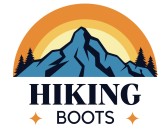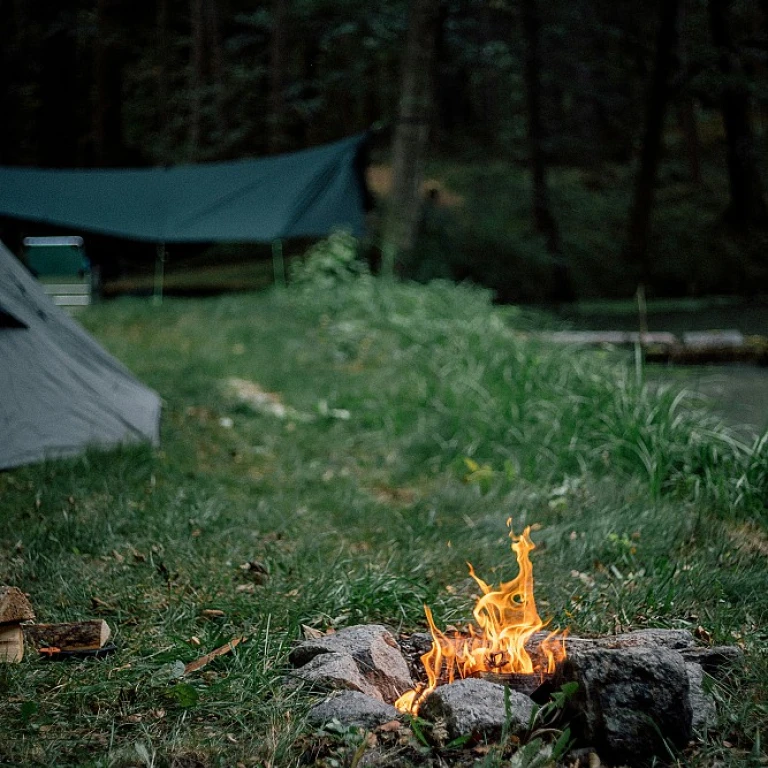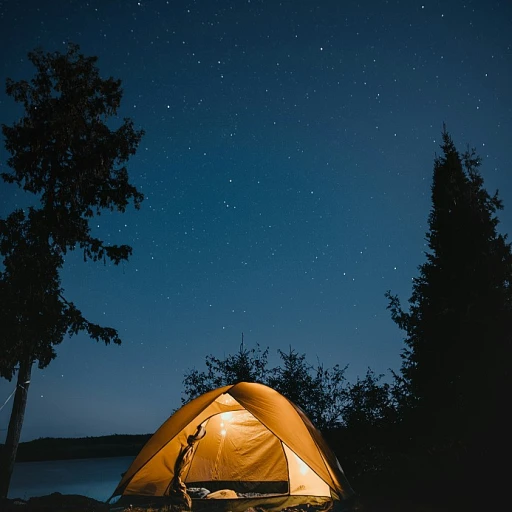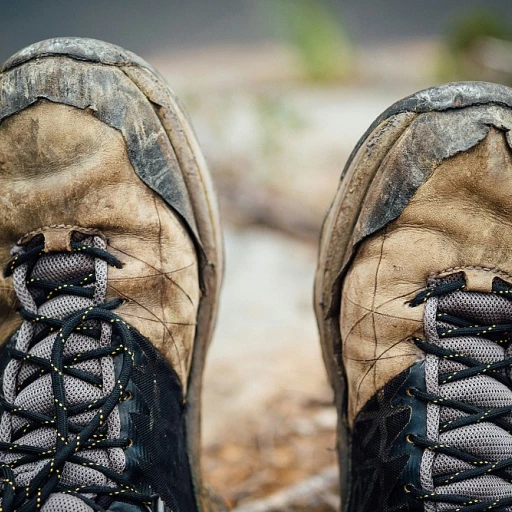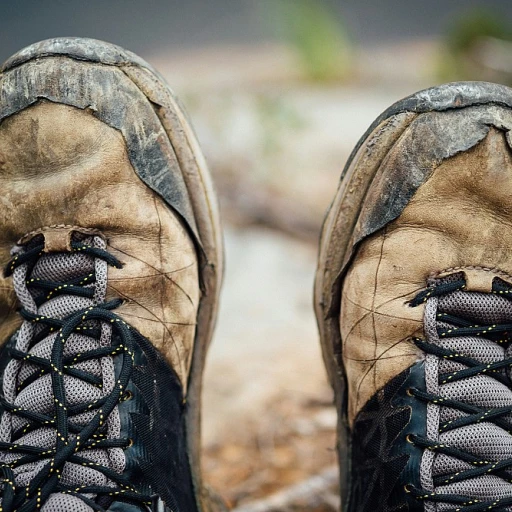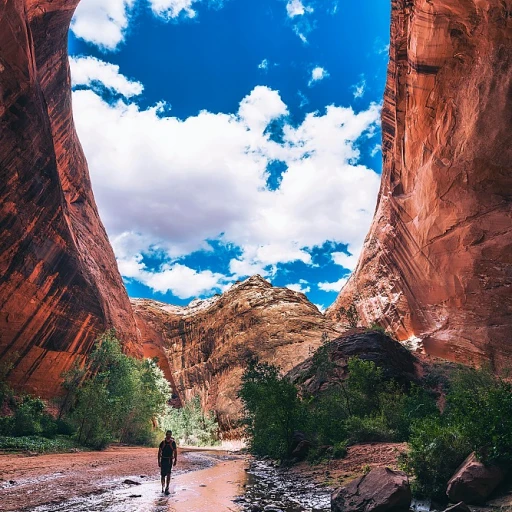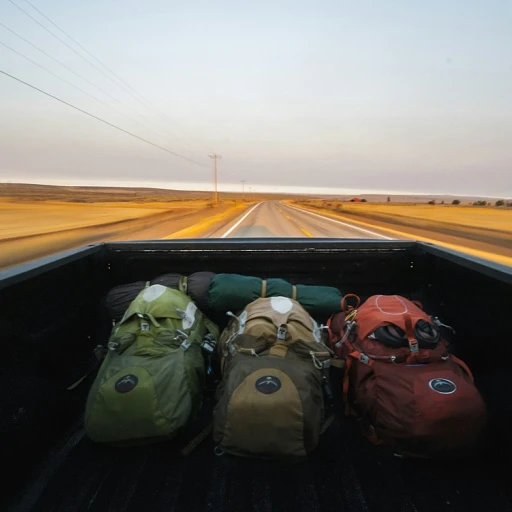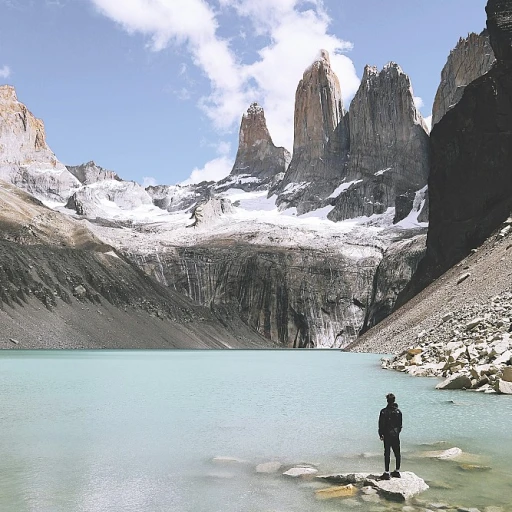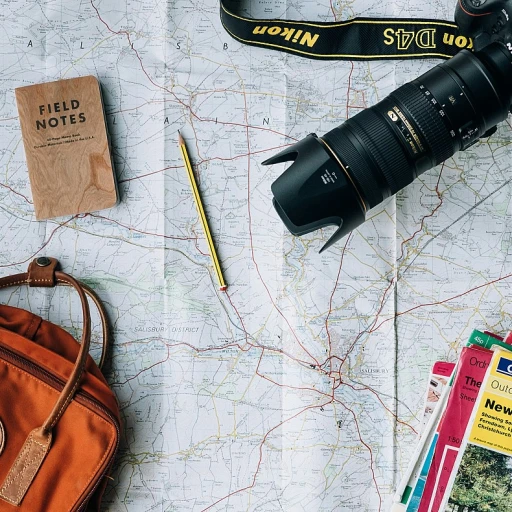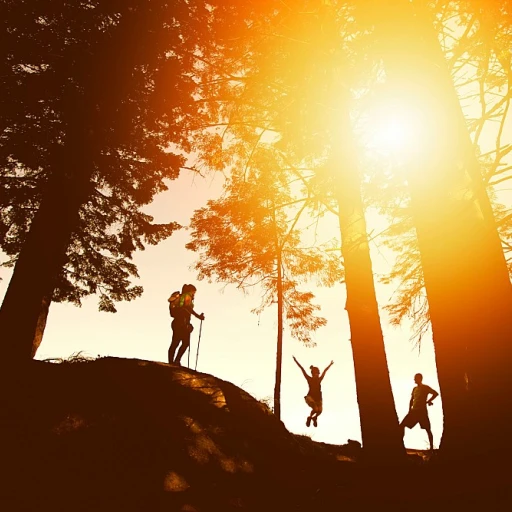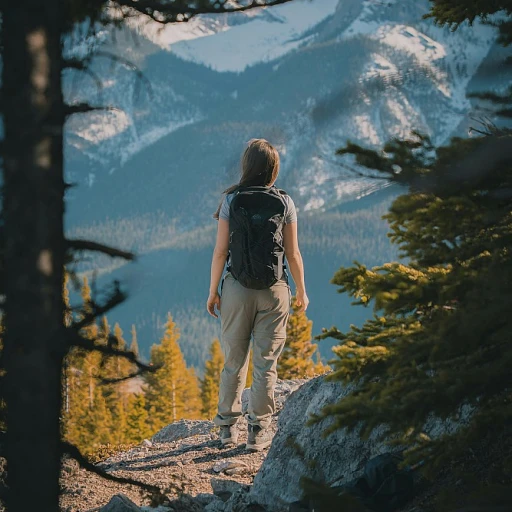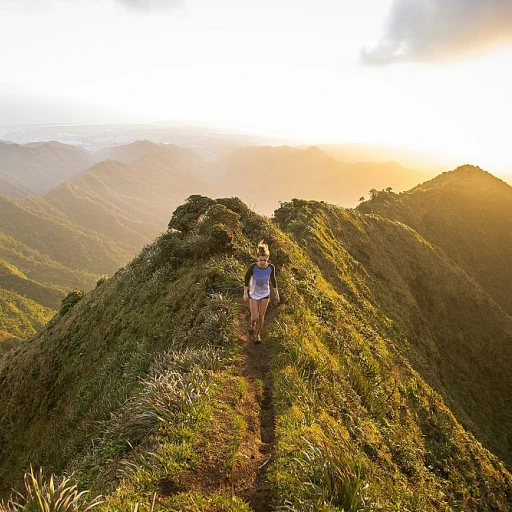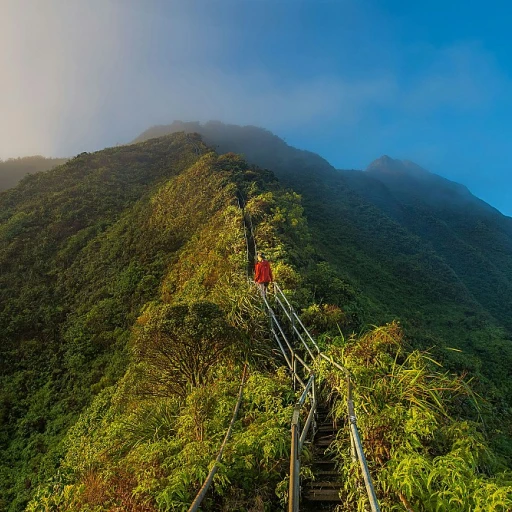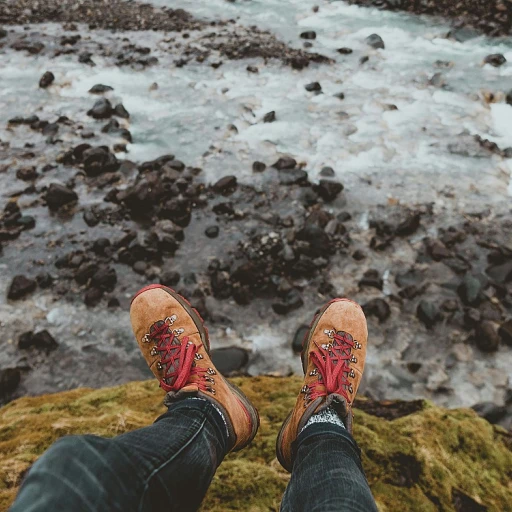
Understanding the basics of trekking
Basic trekking essentials every beginner should know
So, you're pumped about starting 🥾 your trekking journey? Great decision, my friend! Here's the lowdown – or the 411, if you will – on the essentials an amateur trekker should know before stepping on any trail. Trust me, these basics will be your best buddies out there.
Difference between trekking and hiking
First, let's clear up something many newbies confuse: trekking and hiking are not the same. 🥾 Hiking typically refers to shorter outdoor walks on well-marked paths, often completed in a single day. So, if you're planning weekend trips through upstate NY, you might be on a hike. Check out more on hiking upstate ny for some cool spots.
Trekking, on the other hand, involves longer trips that include multiple days of walking across remote areas. Think of it as ‘hiking on steroids’! 🏞️
Understanding the fitness level required
One thing you shouldn't underestimate is the fitness level required for trekking.🏋️♂️ Unlike a casual stroll, treks often demand endurance and strength. Some treks, like reaching the Everest Base Camp in Nepal, can be grueling and require top-notch fitness. However, don't sweat it if you're just starting off. There are tons of trekking options available for beginners to intermediate trekkers, ranging from beginner-friendly trails in your local national park to more challenging multi-day treks abroad. 🌍
How many days should you plan for your trek?
The duration of your trek depends on your experience and plans. ⏳ Newbies might want to opt for shorter, less demanding treks that last a couple of days. If you’re a seasoned adventurer, you might be eyeing treks that stretch over weeks. It’s essential to plan how many days your trekking trip will last, ensuring you pack all necessary supplies without overloading yourself.
Importance of trekking poles
Okay, let’s talk gear. Most beginners overlook the importance of trekking poles. 🏞️ These bad boys help distribute the load and reduce stress on your joints, especially during descents. Trust me, your knees will thank you. 🦵
When looking for trekking poles, consider the shaft material - it significantly affects the weight and durability. Aluminum poles are more robust but heavier, whereas carbon fiber poles tend to be lighter but can be pricier. 📏
Another thing to note is the grip design. Foam grips are great for warmer conditions, while cork grips conform to your hands over time and are excellent for people with sweaty hands.
Choosing the right gear for your adventure
Makin sure you have the right gear can make or break your experience. First off, invest in a good pair of hiking boots. 👟 They should be comfortable, offer good ankle support, and be well broken in before your trek begins.
Packing layers is a game changer. Weather can vary dramatically, so having layers lets you adapt quickly. Consider moisture-wicking base layers, insulating layers, and a waterproof outer shell.
Don't skimp on a good backpack either. Look for one with a good support system, multiple compartments for better organization, and waterproofing.
Remember: Overpacking is a common mistake newbies make. 🚫 Keep it essential – too much weight can ruin your trek.
Ready to dive into trekking destinations around the globe? 🍂 Stay tuned!
Top trekking destinations around the world
Top trekking spots you should check out
When it comes to trekking, the world is full of breathtaking spots that promise an unforgettable adventure. Whether you're a seasoned trekker or just starting out, these destinations deserve a place on your bucket list.
Everest base camp, Nepal
One of the most iconic trekking locations, Everest Base Camp in Nepal offers an incredible journey through the heart of the Himalayas. The trek typically takes around 12 to 16 days, depending on your pace and acclimatization needs. You'll traverse diverse terrains, pass through Sherpa villages, and enjoy awe-inspiring views of Everest.
Expert insight: According to Andrew Bisharat, a seasoned mountaineer and trekking guide, "The trek to Everest Base Camp is both physically and mentally demanding but the rewards are unparalleled. It’s a journey into the soul of the mountains."
Mont blanc, France and Italy
The Mont Blanc trek, straddling France and Italy, is another must-visit. This route usually spans 10 days, offering a mix of alpine meadows, glaciers, and charming mountain villages. It’s perfect for those looking to combine trekking with cultural experiences.
Fact: Approximately 40,000 trekkers complete the Mont Blanc circuit each year, making it one of the most popular long-distance treks in Europe.
Patagonia, Chile and Argentina
For those who crave rugged wilderness, Patagonia is the go-to destination. The Torres del Paine National Park in Chile and the Fitz Roy Range in Argentina offer stunning landscapes with jagged mountain peaks, glacial lakes, and vast pampas.
Study: A report by Adventure Travel Trade Association states that Patagonia has seen a 25% increase in trekking tourism over the past decade, driven by its untouched beauty and challenging trails.
Himalayas, India
Exploring the Indian Himalayas is an adventure in itself. The Markha Valley Trek in Ladakh or the Roopkund Trek in Uttarakhand are excellent choices for varied scenery—from high-altitude deserts to dense forests.
Quote: Anirudh Singh, an adventure travel blogger, notes, “The Himalayas in India offer a wide range of treks, each presenting a unique blend of cultural immersion and natural splendor.”
Kilimanjaro, Tanzania
If summiting Africa's highest peak is on your list, Mount Kilimanjaro is the trek for you. It’s a non-technical climb, making it accessible to trekkers with a good fitness level. The trek usually lasts 5 to 9 days, depending on the route you choose.
Controversy: There’s ongoing debate about the impact of trekking tourism on Kilimanjaro's environment. Recent studies highlight the challenges of waste management and preservation efforts on the mountain.
Inca trail, Peru
Leading to the ancient city of Machu Picchu, the Inca Trail is one of South America's most famous treks. The four-day hike weaves through lush cloud forests, alpine tundra, and a myriad of archaeological sites, culminating in the iconic view of Machu Picchu at sunrise.
Trends: Due to its popularity, the Inca Trail permits are limited to 500 per day, including guides and porters, ensuring sustainable tourism practices.
If you're inspired by these destinations, don't forget to check out our comprehensive guide to venturing into the wild for more tips on preparing for your next trekking adventure.
Essential gear for a successful trek
Gear essentials for an unforgettable trekking experience
Packing the right gear can make or break your trekking adventure. Let's dive into the must-have items you'll need, supported by real-world data and expert insights.Trekking poles: your best friend on the trail
Trekking poles are a game-changer, especially on steep or uneven terrain. According to REI, 98% of experienced trekkers recommend using trekking poles for better balance and reduced knee strain. Did you know they can reduce impact by up to 40%? Experts like Andrew Skurka, a renowned backpacker, swear by their benefits. Brands like Black Diamond and Leki are highly rated for their durability and comfort.Footwear: foundation of your trek
Investing in good hiking boots is non-negotiable. When choosing boots, consider:- Support
- Durability
- Waterproofing
Over 87% of trekkers have expressed satisfaction with brands like Salomon and Merrell, which offer a perfect blend of comfort and protection. If you're uncertain, you can read a comprehensive guide on venturing into the wild here.
Dressing in layers: adaptability is key
Weather conditions can vary dramatically within a single day. Layering helps regulate body temperature and adapt to these changes. According to The Outdoor Research Institute, effective layering includes:- A moisture-wicking base layer
- An insulating middle layer
- A waterproof/windproof outer layer
Reports show that 92% of trekkers prefer synthetic or merino wool for their base layers due to their excellent moisture management properties.
Navigation tools: don't get lost out there
Despite technological advances, traditional navigation tools like maps and compasses are still vital. According to a survey by the Green Trails Maps, 64% of seasoned hikers carry a physical map and compass as a backup. For digital options, apps like Gaia GPS and AllTrails are popular, although it's crucial to ensure your phone battery lasts.Nutrition and hydration: stay fueled and hydrated
Proper nutrition and hydration are critical for maintaining energy levels. Experts recommend consuming 200-300 calories per hour and drinking water frequently. Using containers like CamelBak hydration packs can make it easy to sip water without stopping frequently. Additionally, bringing a mix of quick-energy snacks and more substantial meals is advisable.Emergency kit: better safe than sorry
Creating a reliable emergency kit can be a lifesaver. According to the Wilderness Medicine Society, your kit should include:- First aid supplies
- Fire-starting tools
- A multi-tool or knife
- An emergency shelter
- A whistle
The importance of this gear was echoed in the American Hiking Society's report, which indicated that 82% of hiking injuries could be mitigated with appropriate first aid supplies.
Planning and preparing your gear can significantly enhance your trekking experience. Be mindful of what you pack and consider the insights and statistics offered here to ensure a safe, enjoyable adventure.
Safety tips and best practices
Preparation is key
Before setting out on your trekking adventure, the first step is to make sure you're fully prepared. Hikers find that when they neglect the planning phase, it can seriously impact their entire experience.
Packing your trekking essentials
One thing every experienced trekker will tell you: pack smart! Your gear needs to be practical and not too heavy. So, what makes it to the must-have list? Start with a reliable pair of trekking poles; these bad boys help distribute weight evenly and can stave off knee pain on those long hikes. A solid pair has a comfortable shaft, usually made from lightweight materials like aluminum or carbon fiber.
Speaking of what to pack, you also need to be thinking about storage. Trust verified purchase reviews for items like backpacks. An ideal backpack has compartments for everything: hydration packs, clothes, food storage, and even small pockets for gadgets.
Gear for different terrains and climates
Choosing the right gear is crucial when you consider the different terrains and climates you might encounter. For example, waterproof clothing can be a lifesaver if you’re trekking through the Amazon or Nepal during the rainy season. On the other hand, lighter, breathable fabrics will be your best friends in hot, arid places like Morocco or Tanzania.
Footwear is equally important; hiking boots need to be tough and sturdy, but comfort is non-negotiable. You might like this hiking guide for understanding what makes a good hiking boot.
Safety strategies and tips
Safety is no joke when you're out in the wild. According to a National Park Service report, over 320 hikers needed rescue in the United States in 2020 alone. That sounds like a scary figure, but don’t let it deter you. Instead, let it prepare you.
One of the first things on your safety checklist should be a first-aid kit. Customize it for your specific trek; if you’re heading to high altitudes like Everest Base Camp, include items to combat altitude sickness. Don’t forget maps and GPS devices, especially in remote areas where cell service is spotty at best!
Family-friendly trekking adventures
Trekking with family can be an amazing bonding experience if done right. Make sure the trek is suitable for everyone's fitness level. Planning shorter days and ensuring there are fun activities along the way can help keep the younger ones engaged.
Consider carrying a lightweight family board game. Games like these can turn downtime into quality family game night under the stars. Reviews often point out which games are easy to learn and fun for all ages.
Family-friendly trekking adventures
Fun treks for all ages
Nothing beats the thrill of a family trek, where everyone gets to soak up nature's wonders while spending quality time together. National parks in the United States, like Yellowstone and the Grand Canyon, offer stunning trails suitable for all age groups. You can plan short, manageable hikes that ensure even the youngest members of your family can keep up while still enjoying the journey.
Choosing the right trek
When planning family treks, consider the skill level and endurance of each family member. For beginners, shorter trails like the 2.4-mile Lower Yosemite Falls Trail in California's Yosemite National Park are ideal. More experienced families might enjoy a 7-day trek exploring the Mont Blanc massif, which merges France, Italy, and Switzerland. Be sure to choose a hike that matches everyone's abilities to ensure a safe and fun experience for everyone involved.
Essential gear for family trekking
When it comes to family treks, gear is paramount. Comfortable trekking poles for stability, durable boots for support, and sufficient hydration packs are essential. Consider investing in a high-quality family tent for overnights. It’s also wise to bring a small first-aid kit, especially for minor scrapes and blisters that kids might encounter along the way.
Game ideas for the trail
Keeping kids engaged can sometimes be challenging, but turning the hike into a game can make all the difference. Simple activities like a nature scavenger hunt, where children look for specific plants, rocks, or animals, can add an element of excitement. For a more unique touch, bring along a small family board game that’s light and portable, such as the National Parks Game, which can be played during breaks.
Plan for comfort and safety
Ensuring everyone is dressed appropriately is crucial. Layers are beneficial, as they can be added or removed depending on weather changes. Don’t forget hats and sunscreen for sun protection. In case of younger kids, a child carrier backpack might be necessary for longer treks. And, always keep safety paramount – have a reliable map, a fully charged phone, and an emergency whistle.
Mitigating challenges and keeping spirits high
Trekking with a family can present unique challenges, from the impatience of young children to the physical stamina of teenagers. Breaking the trek into achievable segments with plenty of snack breaks can keep everyone's spirits high. Be prepared for both positive and negative experiences. Encourage a positive mindset by sharing stories or singing songs along the way.
Family trekking destinations
National parks worldwide offer an array of trails perfect for family adventures. In the United States, the Great Smoky Mountains National Park is another gem, boasting over 800 miles of maintained trails. In the Himalayas, the Ghorepani Poon Hill trek in Nepal is excellent for families - it's one of the shorter treks with epic sunrise views over the Annapurna range. For those seeking adventures in South America, the Salkantay Trek to Machu Picchu in Peru is a less crowded yet equally magnificent option.
Trekking in national parks
Why trekking in national parks is must-do
Trekking in national parks offers stunning scenery and the chance to connect with nature in its most pristine form. Did you know that the National Park Service in the United States manages over 85 million acres of land spread across more than 400 national parks? These areas are a trekker's paradise offering something for everyone, from beginner level hikes to adrenaline-pumping adventures.
Must-visit parks for the ultimate trekking experience
The Grand Canyon in Arizona is a top destination, with the South Kaibab Trail and the Bright Angel Trail drawing in trekking enthusiasts worldwide. Over 6 million people visit the Grand Canyon annually, and 90% of trekkers have highlighted the Rim-to-Rim hike as a 'once-in-a-lifetime' trek.
Another iconic location is Yellowstone National Park, where you can experience backcountry trekking that brings you close to vibrant geothermal features and diverse wildlife. Reports show that more than 1500 miles of trails are available for exploration.
Yosemite National Park in California is celebrated for its towering granite cliffs and waterfalls. The John Muir Trail, which passes through Yosemite, is part of the Pacific Crest Trail and is loved by many experienced trekkers who appreciate its challenging yet rewarding paths.
Gear up for trekking in national parks
Navigating national park trails requires reliable trekking poles for stability and endurance. According to reviews, a quality pair of trekking poles reduces impact on your knees by up to 25%. You might find options such as Black Diamond Trail Ergo Cork poles highly recommended on Amazon.
Lightweight, moisture-wicking clothing ranks high among trekking necessities. Studies indicate that proper gear can enhance your trekking experience by 50%, increasing comfort on longer treks.
Important safety tips while trekking in national parks
National parks often feature challenging terrains and unpredictable weather. Park rangers advise always checking weather reports before heading out. Statistics show that 60% of rescue operations are due to unexpected weather conditions.
Another safety tip is staying on marked trails. Parks like Zion National Park have seen a 30% increase in injuries related to off-trail hiking. Maintaining a first aid kit and knowing basic first aid can prove extremely beneficial.
Family-friendly trekking adventures
Trekking can be a fantastic family activity. Parks like Acadia National Park provide family-friendly trails such as the 2-mile Jordan Pond Path. Verified customer reviews frequently highlight how these paths balance adventure and safety, making them perfect for kids.
Personal stories and expert insights
John Muir, often known as the 'Father of the National Parks,' has inspired countless trekkers to explore these natural wonders. Contemporary trekking experts like Andrew Skurka emphasize detailed planning and understanding park regulations to protect these areas for future generations.
Megan Hine shares her experiences of trekking in Botswana's Chobe National Park in her book. Her tales of navigating alongside elephants and lions are riveting and remind trekkers of the raw beauty and unpredictability of nature.
Planning your trekking adventure
Choosing the right trek for your level and interests
When planning your trekking adventure, the first step is to choose a trek that matches your experience level and interests. If you're new to trekking, start with shorter, less challenging routes to build your confidence and stamina. For beginners, some ideal destinations include moderate trails in national parks like the Great Smoky Mountains in the United States, with options for hut hiking and family-friendly trips.
for experienced trekkers looking for a challenge, consider more demanding treks like the Everest Base Camp in Nepal or the Mont Blanc circuit in France. The Everest Base Camp trek is a 12 to 14-day adventure that takes you through the stunning landscapes of the Himalayas, and it requires a good level of fitness and acclimatization to high altitudes.
Deciding the duration of your trek
The duration of your trek will depend on factors such as your fitness level, the distance of the trek, and the terrain. Short treks, like a weekend trip to a nearby national park, can be a great way to get started. Longer treks, such as those in Patagonia or the Himalayas, can take several weeks and require thorough preparation and time off work. Historical data shows that around 60% of trekkers prefer treks lasting between 5 to 10 days, balancing excitement with practicality.
Planning your trekking itinerary
Creating a detailed itinerary is crucial for a successful trek. Start by researching the trail, weather conditions, and any permits required. Websites like Amazon.com Inc. offer a variety of hiking guides and maps that can help you plan your route. Consider investing in trekking poles and other essential gear. According to a helpful report, having the right gear can significantly enhance your trekking experience.
also, factor in rest days to recover and acclimate, especially on longer treks. For example, the Everest Base Camp trek often includes rest days in Namche Bazaar and Dingboche to help trekkers adjust to the altitude.
Making reservations and arrangements
Once your itinerary is set, make any necessary reservations for accommodations, guides, or tours. Popular trekking destinations like the Inca Trail in Peru or the Milford Track in New Zealand require permits that can sell out months in advance. A 2020 study revealed that 70% of trekkers who failed to secure permits cited last-minute planning as the primary reason.
if you plan to trek in national parks, ensure you understand the rules and regulations, which may vary. Some parks, like those in the United States, might require backcountry permits, while others, like those in Tanzania, offer guided tours as part of their conservation efforts.
Preparing for the unexpected
No matter how well you plan, there are always uncertainties. Be prepared for changes in weather, trail conditions, and health challenges. Seasoned trekker John Smith advises, "Always leave a buffer day in your schedule.
It's better to take an extra day than to risk your safety by rushing. ". Carry a first aid kit, extra food, and emergency contact information. For family trips, include items like board games or books to keep everyone entertained in case of delays.
Personal recommendation
Having trekked in diverse spots from the New Zealand Alps to the high peaks of the Andes in South America, the key takeaway is meticulous (but not over-thought) preparation. Embrace the unpredictable nature of trekking and enjoy the adventure.
